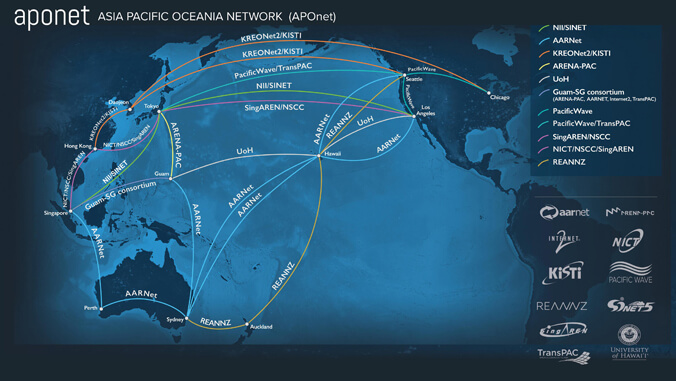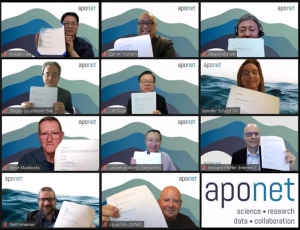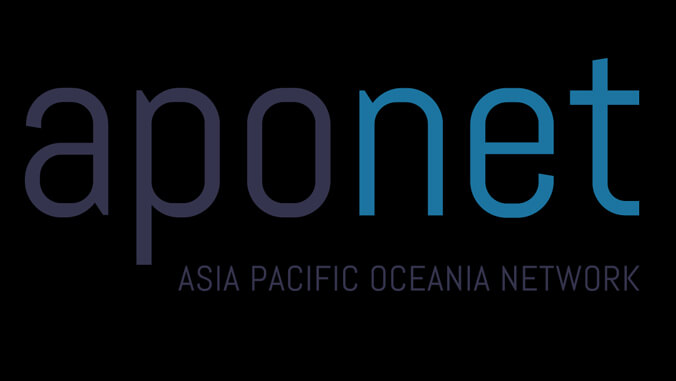
Eleven global leading-edge research and education networks in North America, East Asia, Southeast Asia and Oceania, including the University of Hawaiʻi, are collaborating to improve high-speed network services in the Asia Pacific Oceania region.

The networks and organizations support important multidisciplinary discoveries made by teams of experts spread around the world, collaborating and sharing data and scientific instruments across national boundaries. Explosive growth in the resolution of sensors and scientific instruments, very high-resolution imagery and video, coupled with global scale instruments, has led to unprecedented volumes of experimental data.
The Asia Pacific Oceania network (APOnet) collaboration will connect East Asia, Southeast Asia, Oceania and North America. The networks and organizations involved are:
- University of Hawaiʻi
- Australia’s Academic and Research Network
- Arterial Research and Educational Network in Asia-Pacific
- University Corporation for Advanced Internet Development, also called Internet2
- Korea Institute of Science and Technology Information
- National Institute of Information and Communications Technology
- National Institute of Informatics
- Singapore Advanced Research and Education Network
- Pacific Wave International Exchange
- Research and Education Advanced Network New Zealand
- TransPAC
“This collaboration highlights the important relationships between all of the major [research and education] operators in the Pacific region,” said Garret T. Yoshimi, UH vice president for information technology and chief information officer. “The APOnet fabric of networks serves to bring the largest geographic region on the globe together as a community, further driving world-wide innovation and partnership. The spirit of collaboration and support represented by this growing fabric of networks and relationships are the hallmark of our international communities.”
To support these multinational collaborations and associated data requirements, these global research and education networks will contribute resources that together can be managed to create a high-speed trans-oceanic network services delivery system that is more resilient, flexible and consistent than any individual network on its own. The intent is to elevate the services available for research and education across all of the collaborating networks.
- Related UH News stories:
- $4.5M NSF grant for Pacific cyberinfrastructure, August 18, 2020
- Agreement advances regional high-speed data networking, August 30, 2018
- Share of $5 million grant to improve international research networks, May 12, 2015
The scope of this collaboration includes enabling multiple paths between networks, providing backup connectivity in case of network outages, coordinating engineering and management activities, cooperating on deployment of emerging network technologies and services, experimenting with and developing applications with high-bandwidth demands, supporting shared routing practices, and sharing of measurement data.
UH also hosts an annual meeting called the Trans-Pacific Research and Education (TPRE) for network engineers and other leaders in the region. The 6th meeting was held virtually on January 16, 2021. These annual meetings serve as an opportunity for UH and Pacific Island partners to share updates about what is going on in their areas.
—By Maria Dumanlang


